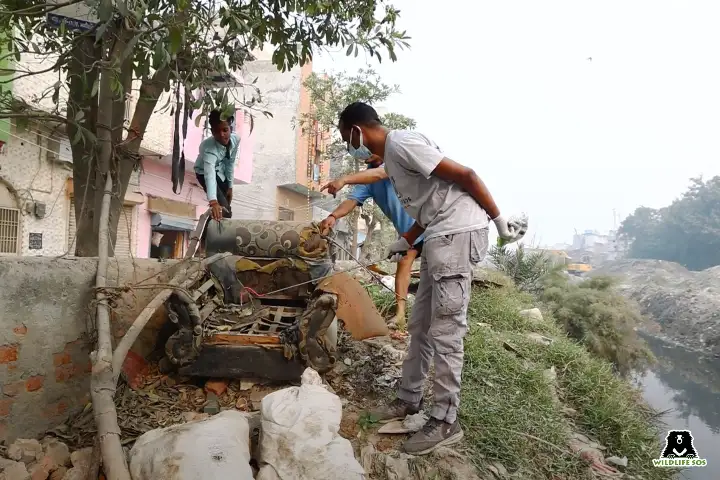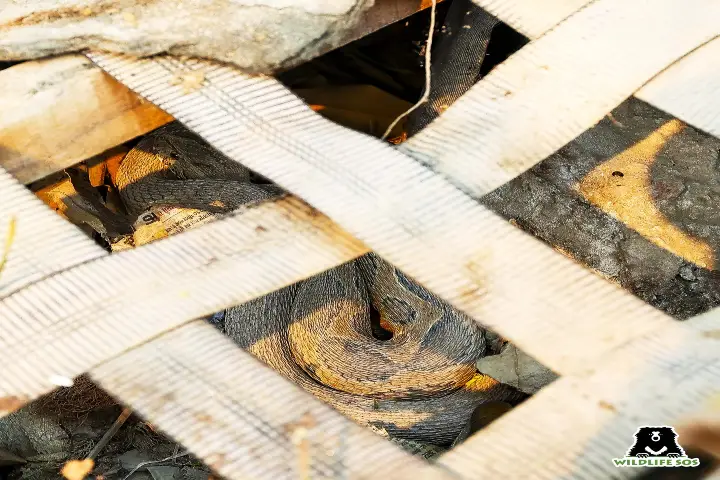

The venomous Russell Viper was rescued from the under a discarded armchair
Residents of the quiet neighbourhood of Bhagirathi Vihar in South Delhi’s Gokulpuri area were in for a shock on Saturday morning when one of the most venomous snakes found in India was spotted there.
An alert local vendor spied the unusual-looking reptile near a canal and immediately informed the Wildlife SOS on its 24×7 emergency helpline number.
Describing the incident, the caller said: “My cart is stationed near the canal and while setting up shop for the day, I heard an unfamiliar hissing sound behind me. After looking closely, I realised it was a snake and assumed that it was a python.”


The NGO’s two-member Rapid Response Unit reached the spot swiftly with the necessary rescue gear. In the meantime, the creature had made its way under a discarded armchair dumped on the side of the canal.
On closer inspection the team confirmed that the snake was Russell’s viper — one of the big four venomous snakes of India. The team took time and used extreme caution before nabbing the creature because the fangs of Russell’s viper are the largest in length among Indian snakes while they react violently on being picked up, and can bite with a snap.
The viper was carefully removed and put in a snake bag. Measuring 4 feet, it is at present under observation and will be released in the wild soon.
Talking about the rescue operation, Wasim Akram the NGO’s Deputy Director- Special Projects said: “The Russell’s viper is found across the Indian subcontinent except for parts of the north and north-eastern states, and inhabits forested as well as agricultural areas. It can be identified generally with their yellowish-brown body colour and dark blotches, but they do have pattern variations.”
The snake is named after Patrick Russell, who played a vital role in identifying the snakes in India and is protected under Schedule II of the Wildlife (Protection) Act, 1972.
The venom of this snake is cytotoxic as it mostly affects the cells and tissues and its main diet includes rodents, small mammals and birds.
Taiwan's military is prioritising combat readiness as a key aspect of deterrence due to escalating…
Calling for an increase in the speed of development, Prime Minister Narendra Modi said on…
The Scottish Government has reaffirmed its commitment to supporting religious freedom and human rights for…
Tara Chand Baloch, the President of the Baloch American Congress and a former Cabinet minister…
In a groundbreaking study, researchers from McGill University have identified nine biological markers in the…
India, in a firm and unequivocal statement at the United Nations Security Council (UNSC), accused…